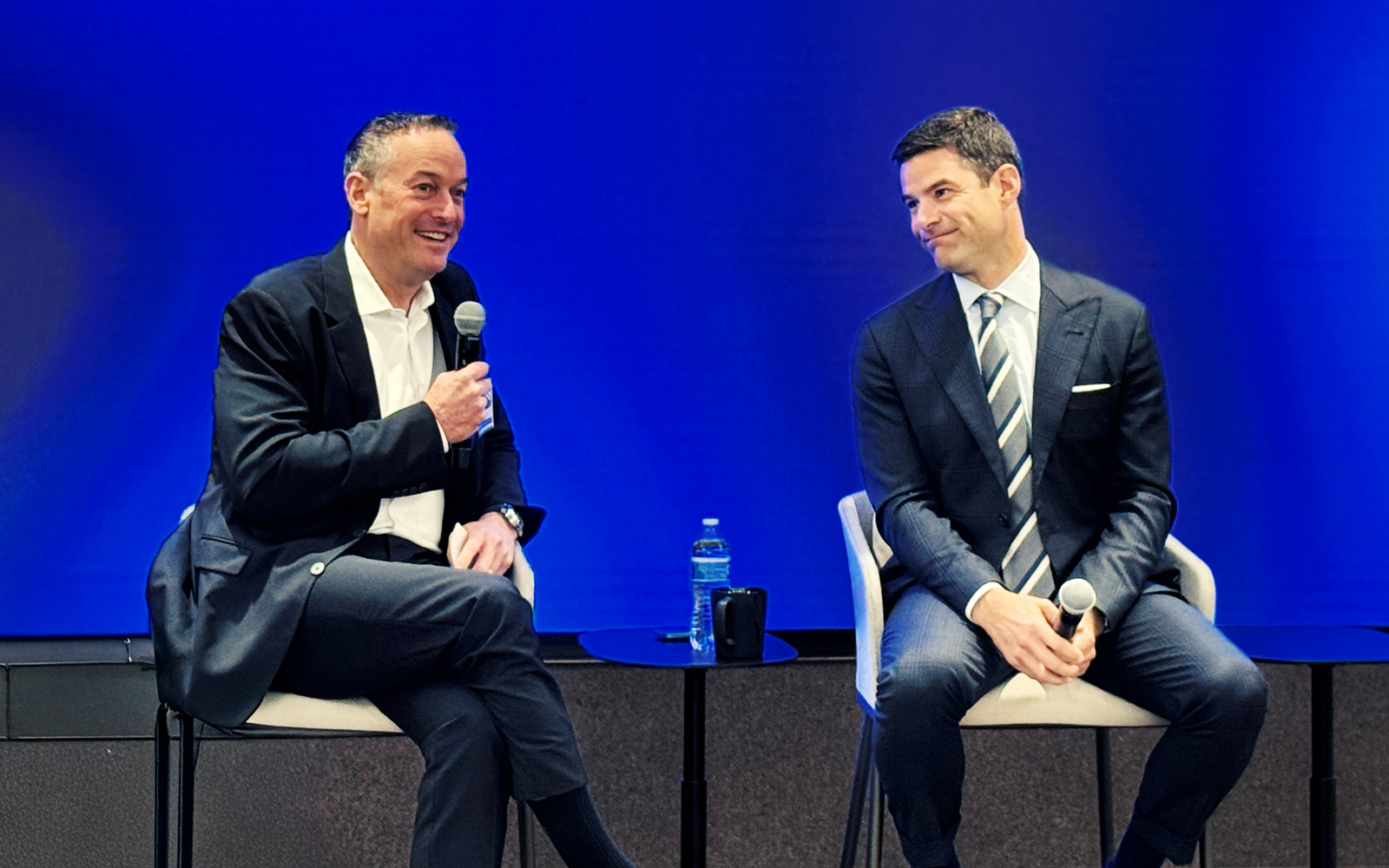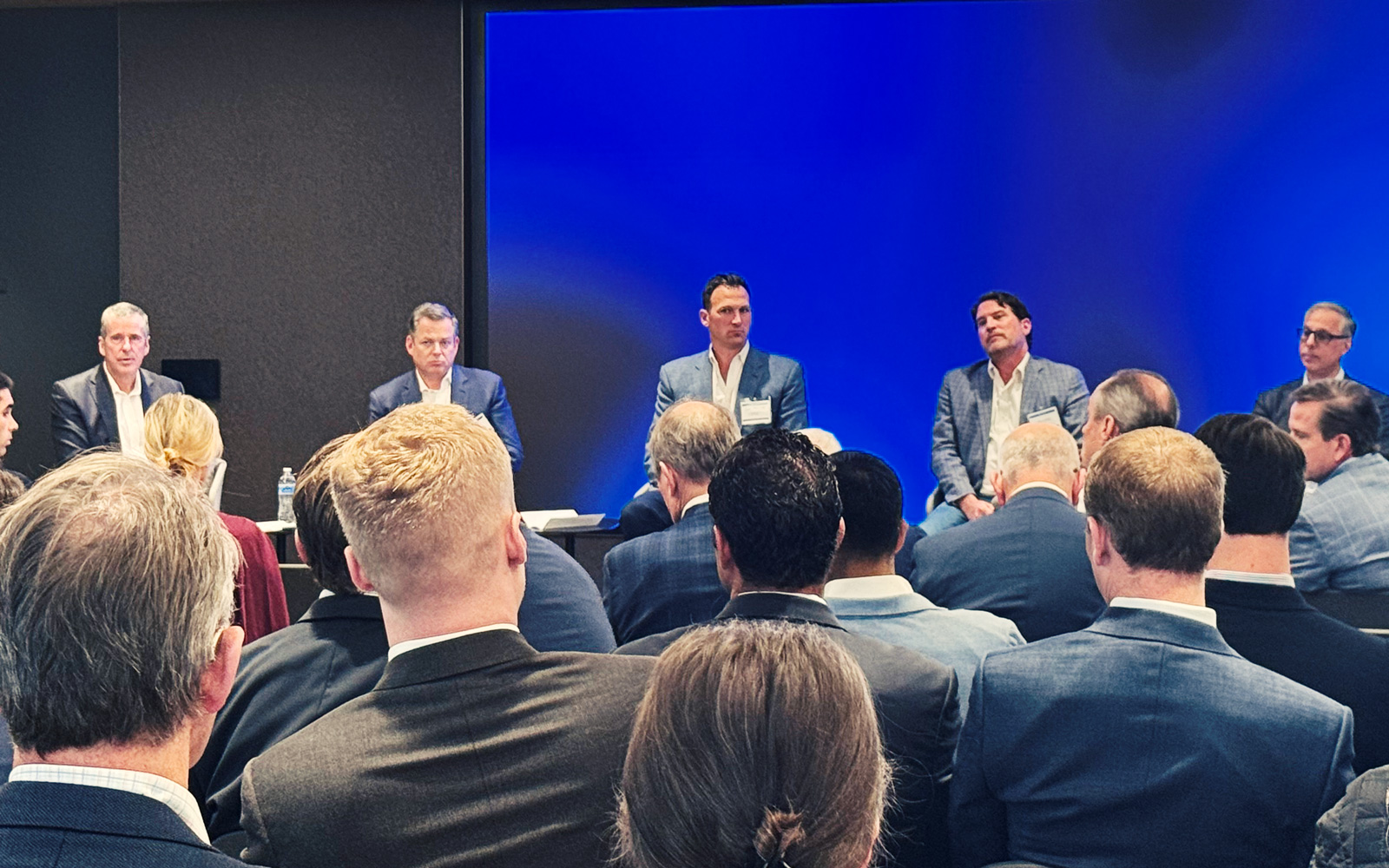San Francisco’s downtown commercial owners and tenants said they need the city’s help to support small businesses, cut down on costs, and create safe and reliable transit — all in an effort to draw more workers back downtown.
Mayor Daniel Lurie’s administration concurred, at a UC-Berkeley’s Fisher Center for Real Estate-organized event on Monday.
“There’s never been an example like this, where there’s been a city that is thriving in so many ways, with a downtown where half of it is empty or for sale,” said Ned Segal, ex-Twitter CFO and the Lurie-appointed chief of housing and economic development, on a panel at the event.

“Because of our neglect, because of secular changes in how people buy things, how people work, we actually have an unprecedented opportunity, which it’s our collective responsibility to not let pass by, to help downtown realize its potential.”
Carrot, not stick
That potential is tied to getting more workers back to the office, according to panelists representing a who’s who of commercial and residential owners with stakes in downtown San Francisco, along with some of the city’s biggest tenants.
The approximately 120-person gathering included speakers from some of the city’s biggest employers, as well as commercial and residential owners and developers like Shorenstein Properties, BXP, The Swig Company, Wilson Meany and Related California. Many of the real estate executives were in town to attend the Fisher Center’s Policy Advisory Board twice-annual meeting in Pebble Beach at the end of the week. BXP hosted the San Francisco forum in its Mosaic amenities suite at 3 Embarcadero Center.
BXP Chairman and CEO Owen Thomas said that, with many markets seeing at least its Tuesday to Thursday office traffic at just below pre-pandemic levels, many national owners think about return to the office as “a West Coast issue.” Markets like Seattle and L.A. are seeing return-to-office rates similar to San Francisco’s approximately 50 percent, he said,well below East Coast markets like New York and Miami.
Getting those workers back will be more about “carrots,” like amenities and newer buildings, rather than “sticks,” like mandates, he said.

“Newer is winning out,” agreed Charles Malet, president and chief investment officer at Shorenstein, while adding that the “amenities arms race may be going a little too far.”
Shorenstein is leaning toward taking some of that amenities build-out budget and putting it into lower-floor spec suites, which don’t have the built-in amenity of views, he said. That takes the burden off of tenants to coordinate and come to a consensus about what their space should look like and gives them one more reason to make the move, Malet said.
“That seems to be the most effective way to move empty space in this market,” Malet said.
Connor Kidd, president and CEO of Swig, said his firm is also building out spec suites, while still investing heavily in amenities. Without a complete package that includes a conference center, parking, a fitness center and sustainability features, prospective tenants will just rule out the building, he said.
“You absolutely have to do enough to get the tour,” he said. “Then how far you go depends on where you’re trying to compete in the market. Are you trying to be super high end or are you trying to be a value proposition?”
Neighborhood as amenity
Owners have a large degree of control over what they put into their own buildings, panelists said, but need the city to support its small businesses to create a larger draw to downtown.
In fact, neighborhood bars, restaurants, coffee shops and parks were the No. 1-preferred amenity in Gensler’s soon-to-be-released global annual workplace survey, according to Ben Tranel, managing director of Gensler’s SF office and principal at the architecture firm.
Salesforce has always offered less robust in-office food options compared to other tech companies because CEO Marc Benioff wants employees to go out and support local restaurants, said Relina Bulchandani, executive vice president of real estate at the firm. But since the company called employees back to the office last fall, she’s heard from workers that “the mom and pops have shut down around us,” which makes getting those lunches more difficult.
Community is “very, very important,” said Eric Chan, chief business and strategy officer for Gap, and can mean everything from restaurants to dry cleaners to pet sitters for all of those pandemic-era puppies.
“There’s still some work to be done in San Francisco to get that sort of vibrant culture back in a big way,” he said.
He added that overall there just isn’t enough foot traffic downtown and until there is, “there’s always going to be a little bit of apprehension about where we are.”
SF down, but not cheap
Gap employees have also been telling Chen that the expense of utilizing those neighborhood amenities, from parking to going out to lunch, makes coming back to work “tricky as a value proposition.”
“A lot of our employees are pinched because they feel like a big portion of their paycheck is being taken up by return to work,” he said. “Whatever way the city can help mitigate some of that stuff would be a big win.”
Housing affordability is an even bigger issue for employees and Related California President Gino Canori said the mayor’s upzoning efforts won’t help developers build more housing unless there’s also a major reduction in construction and insurance costs.

“We’d love to take advantage of [the rezoning], but the cost structure in San Francisco is prohibitive, so the rents need to come back another 20 percent,” he said, adding that that could happen if more workers return to the office and new construction remains extremely limited. “The city is poised for significant rent growth, more than anyone thinks, if they continue with the return to office.”
Transit troubles
With so many people priced out of the city, workers’ commuting concerns often come to employers when return to office is discussed, panelists said.
Every day an employee is asking their employer if the transit time and cost is worth the trip into the office, said BXP’s Thomas.
“If you make the transit easier, it’s more likely to be worth it,” he said.

Some Gap employees have also reported safety concerns on transit, said Chan, which becomes another barrier to getting back to the office.
Between traffic, bridge tolls and parking costs, “commuting in San Francisco is a pain in the neck,” said Brian Newman, vice president for real estate at UCSF Health, which has 34,000 San Francisco-based employees, only 40 percent of whom live in the city.
The university and hospital have invested $4 million in the new ferry stop near their campus in Mission Bay and have another $11 million for transit improvements near their Parnassus campus in the Sunset just waiting in escrow for some energy upgrades from the San Francisco Municipal Transportation Agency to move forward, he said. They have also committed to building 1,000 workforce housing units on land they own or with a third-party developer.
“We put our money where our mouth is and try to encourage those partnerships,” he said.
City is listening
Representatives from the city were on hand and said that public-private partnerships would be key to revitalizing downtown. They want to remove constraints and offer possible tax incentives, making it easier to convert old office buildings to residential and build new housing.
“My job is trying to make it as easy as possible to build in San Francisco,” said Anne Taupier, director of development for the city’s Office of Economic and Workforce Development.
The city’s chief economist, Ted Egan, said the city should look into creating an artificial intelligence institute to support the sector, which he felt was in its first inning of growth, and cement the city’s reputation as an AI hub. He said the city also had to get better at business attraction, which it has never needed to do in the past.
Segal, Lurie’s chief of housing and economic development, said the city was actively working on cleaning up its streets in an effort to bring in new businesses.
“The streets have to be clean and safe — not just the statistics, but what you feel in your bones,” he said.
He was also reaching out to his counterparts in other cities to hear about best practices and said the city is also looking for feedback locally, through its 311 service and direct connections from the people in the room to their contacts at City Hall.
“You must tell us what we need to hear,” he said, adding that, “We get a lot more done when we’re together than we do when we’re apart. So it’s our job now to address as much of that with as much urgency as we can.”
In four years, he said, he would like to see people, including students “with a university name across their shirts,” walking around downtown at 9 o’clock at night, maybe with a beer in their hands, shopping at small and large retailers, visiting museums and other new attractions — and “a bunch of cranes” towering over it all.
Read more



